About the Guest
Noah Glass is the Founder and CEO of Olo, an on-demand interface for digital ordering and delivery for the restaurant industry. Noah was named one of the 50 most influential people in foodservice in the 2017, has been a part of the Nation's Restaurant News Power List in both 2018 and 2020, and was recognized as one of the Most Intriguing Entrepreneurs at the Goldman Sachs 2019 Builders + Innovators Summit.
Episode Summary
Noah Glass, Chief Executive Officer at Olo, talks about how delivery marketplaces are poised to dramatically change how restaurants compete in an on-demand future.
Episode Transcript
Zach Goldstein:
00:01
From fake meat and robot chefs to ghost kitchens and delivery drones. The restaurant industry is rapidly evolving. Welcome to Food Fighters, bringing you interviews with the leading industry trailblazers. I'm your host, Zach Goldstein.
Zach Goldstein:
00:15
This is Zach Goldstein and welcome to the Food Fighters podcast. Excited to be here with Noah Glass, founder and CEO of Olo, the interface between restaurants and the on-demand world. Noah, thanks for joining us on Food Fighters.
Noah Glass:
00:32
Zach, thank you so much for having me.
Zach Goldstein:
00:35
So, we've actually been talking about this a lot, Noah and the partnership between Olo and Thanx is is really influential in the market. You have been a visionary in the world of digitization of restaurants, delivery pickup for years. And one of the things that that you've said is restaurant executives are racing to grow top line sales and are engaging in haphazard profit eroding and often foolish behavior to do so. The measure of success in the years to come will be a restaurant's percentage of direct digital sales. Tell us what you mean by that because I think that's really at the heart of this struggle that restaurants are going through as they redefine an identity in a, in a digital world.
Noah Glass:
01:24
Yeah, thanks. So when I think about what's been happening really over the last three, four years in the industry, there has been a foot race to grow digital sales of all kinds. And so brands are launching their own apps and websites to do digital sales and directly meet the needs of their on-demand consumers. That is, when a brand builds their own app or website, what we refer to as "direct digital sales". And then also brands are working with third party marketplaces and these are companies like Grubhub and Uber Eats and DoorDash and Postmates and many others. That's what we refer to as "indirect digital sales". And, I don't think that restaurant brands have really distinguished, at least when they speak to investors, about what percentage of their digital sales are direct digital and what percentage of their digital sales are indirect digital. And at Olo our view is that not all digital sales are created equal and that the true measure of health for a brand and how it's engaging consumers in this new on-demand economy is really a brand's direct digital sales and how they're growing that quarter over quarter.
Noah Glass:
02:39
And it's just dramatic when you look at the economic impact, not to the top line, but really to the bottom line of profitability for the brand and profitability of individual franchise locations. Whether those transactions are coming through direct channels, where the brand is really not paying a commission on the transactions, gaining a digital relationship with that guest, versus transactions that are coming through indirect digital channels where brands are typically paying a 20 to 30% transaction fee as a commission to the marketplace, eroding most of, if not all, of the profit of the transaction. And fundamentally not forging that digital relationship with the guests because the order is done as kind of a rented transaction where the orders coming in through a marketplace and the data about who that customer is, is not something that the brand leaves with. Nor is the transaction.
Noah Glass:
03:38
The transaction is actually being processed on the marketplace's merchant account and only later being remitted net of those 20 to 30% commissions back to the restaurant. So I think my comment around chasing top line sales specifically is, you know, when you're just reporting what percentage of overall sales are digital and you're just racing to grow same store sales as just purely top line, it can look really attractive and it can be seductive to go after marketplace sales and sign splashy agreements with marketplaces that are going to drive transaction volume to you. It's a problem for the health of your organization, your brand, your franchisee base if that's coming through a 20 to 30% commission channel and the profits have been eroded, especially if that's coming at the expense of forging the valuable longterm relationship with guests through your own direct digital channel. So I see a lot of that behavior happening in the market where part of the short termism of needing to give quarterly results to investors, partly those investors not asking the right questions but still being focused on just same store sales growth and not underlying profitability of the bottom line.
Noah Glass:
05:01
You see executives chasing after these top line sales and doing it at the expense of building for the long term. And I think that's a recipe for disaster.
Zach Goldstein:
05:11
Yeah. And as you know, I recently wrote a report called "Four Horsemen of the Restaurant Apocalypse?" – There is a question mark at the end of that title I think we are still seeing how this all shakes out. But it likened what we're seeing in the restaurant space to the online travel agency disruption in the hotel space. Where hotels were dis-aggregated from their customers. And the risk is that they are taking ownership of your customer and renting them back to you at a significant cost disadvantage. And the question there is, the one that you just highlighted is when focused on third party delivery and on growing digital at all costs. It means you're not prioritizing building those lifetime values with your customers. It means you're not prioritizing the actual profitability of those transactions. And you're crossing your fingers and kind of hoping it's incremental. Talk about some of the stuff that you've done as you've looked at expanding your, your product offering, Rails and, and Dispatch to try to make it easier for a brand to think around lifetime value and profitability of an individual transaction. Because I think that's what's often missed in this dialogue. And, and that was your point you're making around top line and percent total digital. That's not enough. You gotta go a level deeper.
Noah Glass:
06:37
Yeah, that's right. I mean, maybe it would be helpful to give a little bit of background to those who aren't familiar with Dispatch and Rails on what those products do and what they're, what they're meant to accomplish. We launched Dispatch first and we did that because we really believe that there was a gap between what restaurant brands were offering to on-demand consumers versus what on-demand consumers we're turning to marketplaces to get. And that gap was delivery. So restaurant brands to this day will offer the ability to order through their app, order through their website and come pick up the order at the store. And then they will put marketplace logos on their storefronts, on their bag and say, if you want delivery, go to the marketplaces. Well that's not fighting you know, a fair fight. That's kind of apples to oranges.
Noah Glass:
07:28
If a consumer is an on-demand consumer who wants delivery, you're channeling them through the marketplaces and not giving them the ability to order directly from you. And we felt that it wasn't really likely that in this wage environment, in this labor environment, restaurant brands were going to go and hire their own delivery fleets. We thought there could be kind of a 'delivery as a service' kind of offering that enabled restaurants to offer delivery through their direct channels to their consumers and to offset the cost of that delivery by charging consumers a fee for delivery. And charging the true cost of delivery. So, in 2016 we announced Dispatch and it was meant to create a network nationwide of delivery service providers who would truly provide delivery as a service and enable a restaurant brand that was taking an order through its website or app to offer delivery matching that specific order with a third party delivery courier who could come and collect the order at the restaurant on behalf of the consumer and then deliver it to the consumer wherever their delivery address was.
Noah Glass:
08:38
And again, in a financial model where the consumer is paying the brand full freight for the cost of the food and paying an additional fee for the convenience, the service of delivery, that fee would go to the delivery service provider and Olo acts something of a clearing house between the two. So we launched that first really to level the playing field between brands and marketplaces so at least it was a fair fight. And brands can say, Hey, do you want delivery? You can get that directly from us. You don't need to go through marketplaces in order to get it.
Zach Goldstein:
09:08
Just to put a finer point on that. That is a consumer who knows the restaurant they want to buy from. They know they want the convenience of that food being delivered. They want to buy $25 of food and they are willing to pay an additional fee for the convenience of that delivery. But there are a huge number of restaurants who, when you show up at their website wanting to place that order, they redirect you to a third party marketplace and they voluntarily sacrifice 20 to 30% of that margin and that's the inefficiency in the market. That's actually not necessary cause that's not the interest that the consumer was going for. They want to order direct from that individual restaurant.
Noah Glass:
09:51
That's right. And to use your OTA analogy, which is, I think a great analogy, and one that we have used to explain this to restaurant executives... What you just described of linking off to a marketplace for guests that wants delivery would be the equivalent of going to the Marriott website and having Marriott link you off to Expedia and say, "Please book your hotel through Expedia. We don't accept reservations booked through our website." It would never happen. It's crazy. The hotel industry has learned a lot of hard lessons along the way over the past really 15 years of engaging with kind of the, the disruption of digital booking in their industry and restaurants need to learn those same lessons and not make the same mistakes. Unfortunately, many of them are.
Zach Goldstein:
10:37
I think the things that the, the, the hotel industry saw is that you need to deliver a user experience that is just as good as what a consumer can get on a, a third party website. And so to me, the example I use in the restaurant industry, and we think about this a lot cause it's part of what we do at Thanx in, in building the, the actual user interface that's deeply integrated into loyalty and CRM. But, if a consumer can one-click reorder when they're on Uber Eats and DoorDash, that's the epitome of convenience. That's a great type of functionality that we want to see restaurants building into their apps and websites to create that user interface that's super easy. And then the other thing that hotels did is they created direct incentives to come to them in the form of personalized marketing and CRM, in the form of loyalty, in the form of low price guarantees. And we see that parallel being very obvious and that's a lot of what we do at Thanx is, how do you actually lock in customers who have a huge brand affinity with you so that they have the right incentives to keep coming back to you cause both sides win. The consumer wins and the restaurant.
Noah Glass:
11:53
Yeah, to- totally agree. I mean, so there's a lot of self inflicted pain that restaurants have brought upon themselves. Sometimes they're not even competing at all and willingly pushing customers off to the third party marketplaces, high commission, low profit channel. Sometimes it's, you know, the restaurant being bad at digital where the marketplaces are excellent at digital as you just described. We also find, and this has been one of the most shocking things, we did an audit or a survey of the top 300 brands on Google and we looked at when you type in the brand's name and the word delivery, where does the restaurant's result rank within the search rankings. On average, across the top 300 brands by sales volume, the brand's first result comes in fifth in the search results and the results one, two, three, and four are all marketplace links to that store offering delivery.
Noah Glass:
12:51
The natural customer behavior is click on one of the first links that shows up, whether it's search engine marketing in the form of an ad, marketplace buying that brand's keyword or in many cases search engine optimization where the marketplace is better at optimizing for search than the brand itself. There's a lot of debate around what is incremental and what is cannibalizing the core business. On these kinds of searches, when a customer is looking for the restaurant brand by name and instead clicking to a marketplace because they show up before the brand and therefore that brand is paying a 20 to 30% commission for a customer that already knew they wanted that food. I mean, that is not incremental.
Zach Goldstein:
13:32
Q and A with the restaurant industry's leading disruptors. This is Food Fighters, the podcast.
Zach Goldstein:
13:42
Lauren Silberman from Credit Suisse wrote just last week that while many of the large chains indicate delivery is 65 to 70% incremental, we have yet to see an inflection in restaurant industry revenue trends to support incremental industry-wide growth. And so, it begs the question, where is the actual incrementality versus the cannibalization? I would argue I'm, I'm sure you would as well, there's some of both. There is no doubt that delivery is here to stay and that people are considering, uh, restaurant dining from their home as something that they can now do that they couldn't do before. Off-Premise is a growing trend and, and I know you have some great data on that, but also there are these instances where people are very clearly cannibalizing a direct-to-restaurant sale with a third party sale and that's not a win for those restaurants involved.
Noah Glass:
14:37
No it's a disaster for a restaurant that is typically let's say a 10% profit margin business, that would be an excellent restaurant if that were the case, if they're giving up 20 to 30% on a transaction where their margin was only 10%, they're in the red on that transaction. And I've heard restaurants argue on a truly incremental transaction where I can sort of just think about the cost of goods sold and labor, or maybe it's that 60%, 30 and 30, and I have a 40% margin to play with. Well then giving up 20 to 30% okay, that's tolerable. But the problem is that you can't differentiate today between what is incremental and what's cannibalizing the core business. You know that those orders that you're redirecting off of your site to a marketplace or orders that are happening because people search for you on Google and they find a marketplace before they find you. Those are cannibalizing the core business. And a lot of what we've built, I think this connects the Dispatch product and it also connects with what we've recently done and announced with Google food ordering are about how do you get the customer who knows they want to order from the brand and knows they want delivery, to order from the brand and make sure the brand is keeping their margin and not having their margin eroded. I saw a really scary analysis. It was at the end of last year, so a bit dated at this point, but it was a by William Blair and the analyst Ralph Schackart and he was showing basically the growth rate of the food delivery marketplaces and the growth rate of brands' direct digital assets, both their apps and their websites. And he showed that at the current growth rate, if you take that forward into 2022 – so just over two years from now – the split between marketplaces and branded kind of owned digital channels will be a 70 to 30 split.
Noah Glass:
16:31
It's about 50/50 right now. So a 70/30 split when you also have analysts predicting over $200 billion in sales going through digital by the end of 2022, that's 140 billion in top line restaurant industry sales going through marketplaces. And if you think about a 25% commission as kind of the median of what's being charged, it's $35 billion of profits in an industry that's probably around a hundred billion in total profit pool. So just think about the, the, the cost of a third – over a third of the profit pool of this industry being eroded by consumers going to marketplaces instead of brands. And you understand the severity of the situation and why brands, restaurant brands are freaking out about what's happening, but also contributing to the growth of these marketplaces in a way that's really unhealthy for them and their franchisees and stakeholders, but unhealthy for the industry overall.
Zach Goldstein:
17:34
I think that's a fantastic point. And the reality is there are, there's so much cost pressure industry-wide and that's why the profit margins are so challenging. And it comes from increasing labor costs. But now increasingly it comes from from delivery. The expectation that you must play in off-premise and in delivery, but there is a real cost of doing so. And the marketplaces have set the expectations in the consumer's mind that it's not as expensive to get a delivery as it may be in reality. Right? The marketplaces are also not making any profit. And so that's the challenge here is that we may be seeing the cost basis of running a restaurant under even more pressure being further eroded. And ultimately the only way to win there, if that's true, is if the profitability of an individual transaction goes down, you have to maximize lifetime value. You have to be getting more purchases from the same customer to succeed. And that's absolutely one of the benefits of what you offer with a, with a digital solution. You can get more purchases per customer, but you gotta have a way to make it easy for them to go direct to the restaurants they have a relationship with and give them the incentives to do just that.
Noah Glass:
18:54
Yeah, and I would say, I mean what we have built at Olo is sort of a starting point, not an end point. I mean the ability to not be bringing a knife to a gunfight and saying, "No, I offer takeout", is that good to an on demand consumer who wants delivery? But to say, I offer delivery and it's another way of doing it and here are some reasons why it's better to order through me, that's just a starting point. Then you need the ability to acquire consumers or take consumers who are analog consumers and turn them into digital consumers so you can do all the things that you're focused on at Thanx and all the things that you're talking about on this, on this podcast, where you're starting to understand your cost to acquire a customer and you're starting to understand lifetime value of the customer and you're starting to understand your most valuable cohorts of customers and where to find other customers that look like them.
Noah Glass:
19:46
These are all new skills for restaurant marketers and sticking with the idea of bringing a knife to a gunfight. The restaurant delivery marketplaces are the black belt ninjas of digital customer acquisition and maximizing lifetime value and thinking about ways to draw you back into ordering your next order. Restaurant marketers did not come up through the industry and get into the top marketing role in their organization based on digital marketing prowess. They got there based on local store marketing four walls marketing, maybe in large enough chains, some advertising and media through TV, print and radio. A lot of this digital marketing is just new math for them. They're going up against the best of the best. And I think that's where having platforms like Thanx to at least have the tools and then get a consultative guidance on how to use those tools are critically important. And you know, our, our point is just let's level the playing field and then it's up to the marketers to differentiate and draw customers to their platform and create a reason why that's compelling versus ordering through the marketplaces.
Zach Goldstein:
21:04
I'm concerned that they're bringing a spoon to this gunfight actually, and that they haven't even chosen the right tool from the toolkit they have. I mean, you, you, you need to, you need to be urgently thinking if you're a restaurant operator, about who are my customers that are actually driving longterm lifetime value and how do I find more of those people or how do I retain them? Because restaurants were already a hyper competitive dynamic. I mean, the reality is that it's already one of the most competitive industries. And now you have, as you say, expert digital marketers that you're going up against. And so that's a playing field that that certainly needs to be leveled. And, and neither of us are arguing by any means that delivery is not here to stay or is not a positive innovation for restaurants. The reality is people increasingly want to dine off premise. They want to have that restaurant experience outside the restaurant. And that's a good thing. But it's just an adaptation that restaurants are a little slow to figure out how to adapt around, I guess.
Noah Glass:
22:06
Yeah, I think that's, I think that's right. And you know, this is a trend that is here to stay. I believe in the data that we have mainly through our Dispatch platform that customers are willing to pay for the convenience of delivery. And that saying, "I expect to make full profit on this order and for you customer to pay more if you want it delivered" is a reasonable thing to ask of consumers. Obviously they also have the opportunity to just come and pick it up themselves. Or as I think about it, kind of be their own delivery courier if the cost of delivery is too high. But a lot of consumers are in a need state where they want something to get delivered to them. And by the way, delivery is a big part of our business, but it's not the plurality of our orders, the plurality of our orders, are takeout transactions. There's just a consumer desire when you're seeing an industry that's now doing 63% of overall transactions for off premise consumption, you know, you're already eating the food somewhere else. So it's better if you're coming to the restaurant to collect the order or having somebody come to the restaurant to collect it for you, to be able to order through digital channels. And I think brands need to get a lot better and focus a lot more than they have been traditionally on really kind of optimizing their digital platform and mastering digital ordering for takeout and delivery.
Noah Glass:
23:28
To turn over one more card cause I think you know we've been talking about the erosion of the profit pool and how competitive the restaurant industry has always been. I think of marketplaces in the longterm and I don't just think about them as these indirect sales channels that ultimately drive transactions to restaurants. There is evidence worldwide. There's evidence now in the U.S. That marketplaces' next move is to learn from all the data that they are tracking and collecting and launch direct to consumer restaurants out of ghost kitchens and cut restaurants out of the equation entirely. And if you look at what Amazon has done with Amazon Basics and other private label brands, while they have retailers who are selling on the Amazon platform, that is a playbook for restaurant delivery marketplaces to use. And with the rise of ghost kitchens, it gives them the production capacity to go head to head and say, 'Hey that $25 transaction that you were lucky to get 75% of, now you're going to get 0% of cause I'm going to sell directly to the consumer and cut you out of the equation entirely.' And again, restaurants working with the marketplaces and retraining consumers by pushing them off of the restaurant website to the marketplace website to place their order. You are now kind of changing the way the customer is wired and where they go when they're hungry and it's speeding the adoption of the marketplaces and leading to a world in which the restaurant can be completely cut out of the equation. And I think that is truly the doomsday scenario that I don't think a lot of restaurants have even thought through to what that looks like.
Zach Goldstein:
25:10
That is the commoditization of food. And that is exactly antithetical to what a restaurant really is, right? A restaurant is an experience that is unique and the brand and that experience and the food, is inherently not a commodity. But in this world it could be and that's very dangerous for the definition of what is a restaurant in the future.
Noah Glass:
25:38
For sure. I mean, think about, you know, the words of, of Jeff Bezos of "your margin is my opportunity" kind of ringing in my head when I think about this. And I think, it would not be hard for a marketplace operating out of a ghost kitchen in order to produce food and, and deliver it to consumers to offer radically lower prices for ordering a like product through their own virtual brand instead of having a customer order through a restaurant. And that's where the power of positioning and saying, "Oh, you're looking for chicken wings? Why don't you order from Boom Wings? You know, the, the new offering that's actually a virtual kitchen at a $1 per dozen lower price." You know, you can imagine customers saying, "Well, this sounds pretty good. I've never tried Boom Wings before, but I will, it's a lower price and they were the first results when I searched for wings." that is the kind of thing that Amazon has done with Amazon Basics. And there are countless other examples of private label brands in grocery, etc. I fear that that is where things are headed. And I, and there, there is certainly evidence of this. Uber has been doing some of this Uber secret restaurant network. Deliveroo is doing it in the UK. There's a lot actually in the news today about cloud kitchens and Travis Kalanick's new, uh, $5 billion entity that is going hard at this space and putting restaurant brands next to virtual restaurant brands. And you have to imagine it's going to be a scary set of competitors going forward. Far scarier than it has been in the past in this industry.
Zach Goldstein:
27:20
Yeah, I mean, the two extremes, I completely agree with that. And I think the two extremes of this commoditization story is, is it a commodity, the food, and the actual differentiated experiences, which marketplace you go to, how efficiently you can get that food and roughly like for like food, what is the lowest cost for wings? I don't really have any brand affinity to one. That's the one extreme. The other extreme is, well actually the logistics, the delivery of the food is what is commoditized. But the brands in the uniqueness of those restaurant brands still matters deeply. And I think it's unlikely that it's all the way to either of those extremes. But I think what you're highlighting here is we seem to be trending industry-wide unless restaurants open their eyes closer to the first one, that it's the food that gets commoditized as opposed to the marketplace of the delivery network, not the other way around.
Noah Glass:
28:18
I think that's right, uh and I think that brands need to work really hard to differentiate themselves, differentiate specific menu offerings. I mean, I, I'm amazed, I see just great value in things like, you know, w Wingstop is a customer of ours. There are people who are devoted to Wingstop. There are people who are devoted to specific flavors offered at Wingstop; lemon pepper is this flavor that they crave. And you know, there are dozens of these devotees to certain flavors and that is great differentiation that instead of looking for wings, I believe people look for Wingstop cause they associate Wingstop is where I get lemon pepper wings. And that translates into, I'm not thinking about chicken wings, I'm thinking literally about Wingstop and my natural move is next to go to Wingstop online rather than going to marketplaces to find chicken wings. I think that's really an example of what we see being a powerful command over driving direct digital sales and a brand that is going to stand the test of time because they're focused on that and have those brand assets that are the opposite of a commodity. They are differentiated, they're craveable and they, they're what they built their franchise upon.
Zach Goldstein:
29:39
We've spent some time now talking about what is probably the ultimate food fight happening in the industry. And as we try to talk about these inflection points industry-wide on this podcast, this is the one that we get a lot of questions about and people want to talk about it. When you think about the one immediate change that a restaurant should be making to insulate themselves and frankly be more forward looking about what is longterm sustainable growth, what does that immediate change that they should be doing? And then, what is the longer term mentality change that if you could recommend one thing you would say to every restaurant CEO industry-wide.
Noah Glass:
30:20
So I would actually say that it's things that restaurants should stop doing first and then start doing. So what they should stop doing: they should stop linking off from their website, as you described, to marketplaces. They should stop promoting marketplaces in any of their media, TV commercials, on their bags, on their storefronts. There shouldn't be marketplace stickers in any place at the restaurant location, or on any of their media. Because the brand should be committed to driving direct digital sales. And unfortunately you see a lot of brands that are going the complete opposite direction and they're doing it in many cases because they believe that they're going to get a discount or they've been promised a discount on commissions in exchange for including the marketplace in their media. And the great irony of that is by being a lower commission, you're pushed to the bottom of the search results on that marketplace and your competitors who are paying full commission are the ones that your customer will start ordering from when they do what you're telling them to do and go to the marketplace. So brands need to stop doing that. They need to commit themselves in the longterm to having a platform, a tech platform that meets the needs of the on-demand consumer. And that means digital ordering for pickup, digital ordering for delivery, and then thinking about how to differentiate their experience of ordering direct from the indirect channels. In between, there are things that we believe brands should be doing and we are counseling Olo brands to do these things where it's in a gray area of things like Google search and when you're forming a contract with a marketplace, making sure the marketplace is agreeing to terms in that contract like "I will not bid against you using your keywords in search engine marketing."
Noah Glass:
32:14
And we saw this first with a brand in Chicago called Portillo's. The Senior Vice President of Marketing, Nick Scarpino, actually came from Google where he was keenly aware of and working on the hotel versus OTA keyword strategies around OTAs using hotel keywords to get clicks, and said that's not going to happen at Portillo's. Any marketplace that wants to work with us cannot use our keywords in their search engine marketing and must agree to that contractually. Because Google will let you do that. It is part of the, the Google terms of service that you're allowed to use a trademark even if you're not the trademark holder in your keyword advertising. But contractually obligating the marketplaces not to use your keywords, critically important. Nick for the first time told that story at our first customer conference in February of this year and every brand in attendance was scribbling down notes. I have to renegotiate using, you know, this idea of a term where they're not able to compete against me with my own trademark keywords. I think also that's going to turn into as this threat of virtual restaurant brands through ghost kitchen becomes more and more real. I think that idea of a noncompete is going to extend to "you as a marketplace must agree to not compete against me with your own virtual restaurant concept." Now, I don't think that an individual brand will be able to get that signed onto by a marketplace, but I think if all of the major restaurant brands with strength and numbers are coming out and saying "marketplaces, you cannot compete against us with virtual restaurant brands through ghost kitchens and your marketplace", I think that can get some of the marketplaces to agree and I think there'll be a good domino effect where it prevents that doomsday scenario that I was warning about earlier.
Zach Goldstein:
34:08
I think that is very tactical advice for restaurant operators, uh and it fits into a category that we've been talking a lot about. I think the one thing that I would add is the data about who are these customers. And in the longterm, the ability to be a top notch digital marketer and digital platform is a differentiator for a restaurant just as having a unique food product has been for the life of restaurants. You have to know who your customers are. You have to be able to get incremental follow-on purchases from them. And that's made impossible when they are anonymous ghosts to you that you're just dropping off food to. And so we're seeing some of the best restaurants out there put as part of their negotiation information about these customers, the ability to re-market those customers, even data sharing. And I'll, I'll share that we had a conversation with, with a large restaurant brand that that said recently, they believe that capturing the data is worth 10 to 15% margin or take rate from the delivery.
Zach Goldstein:
35:13
And I think that makes sense. If you believe you're going to get three, four or five, 15 visits out of that customer, that matters a lot. And so it is a complex dynamic. There's a lot for restaurants to figure out. Conversations like this hopefully are laying some of that framework for what that looks like and certainly innovators like Olo and you Noah are making it easier for restaurants. So, thank you for the time to join Food Fighters. I think this has been really insightful and appreciate you joining us today Noah.
Noah Glass:
35:44
Zach, thank you so much and thanks for launching this podcast and helping to educate the industry as we go through what is a radical shift and as you said, the greatest food fight of our time.
Zach Goldstein:
35:58
You've been listening to Food Fighters with me, Zach Goldstein. To subscribe to the podcast or to learn more about our featured guests, visit thanx.com/food-fighters. That's "Thanx" spelled thanx.com/food-fighters. This podcast is a production of Thanx, the leading CRM and digital engagement solution for restaurants. Until next time, keep fighting Food Fighters.


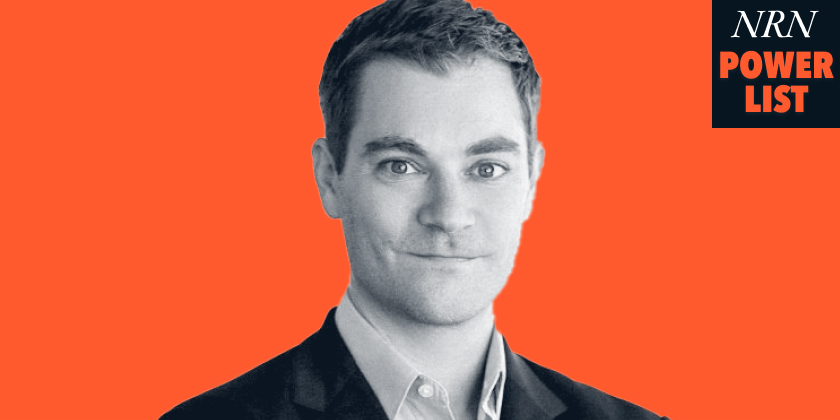

.avif)



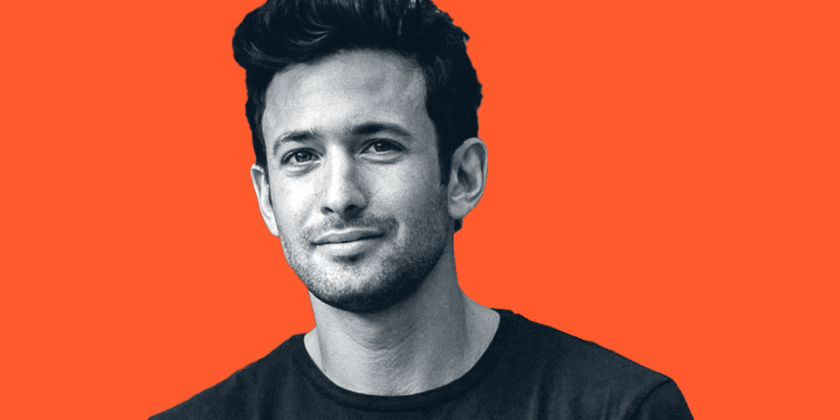


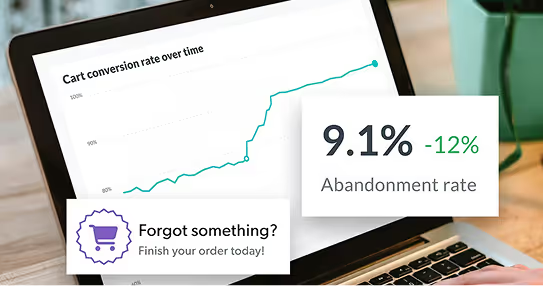
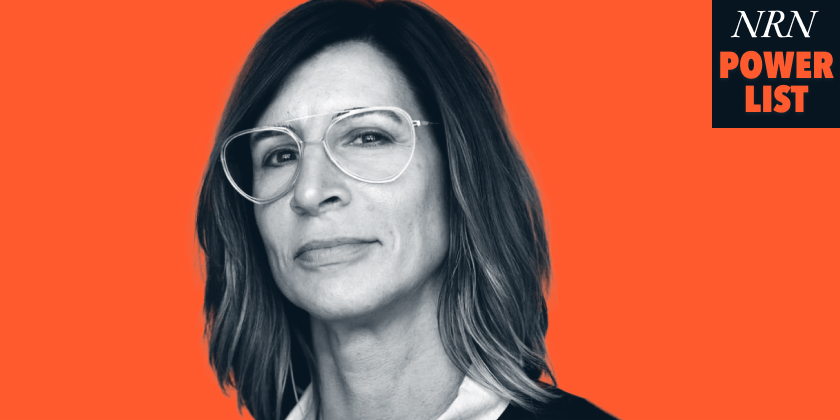
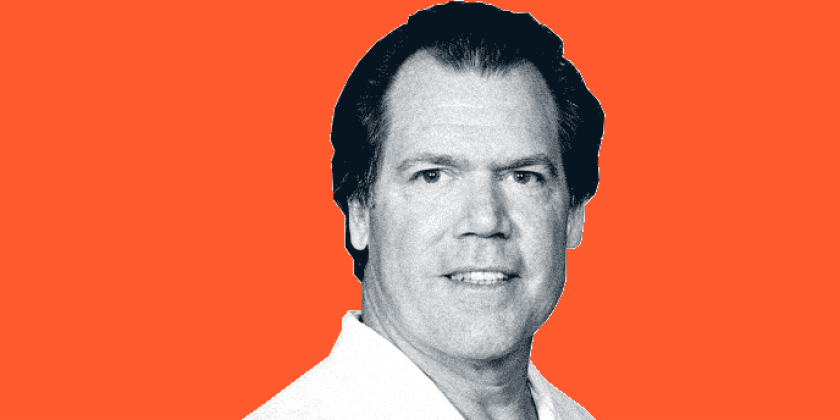
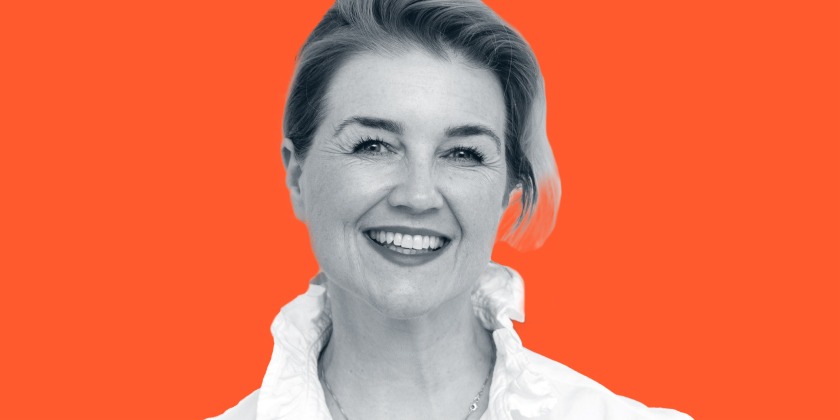



.avif)
.avif)